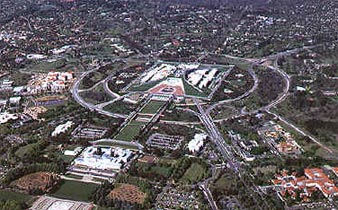Turkish Police Clearance Translation in Canberra
The Australian immigration authorities generally require a translation of a police clearance certificate (also called conviction record, penal clearance certificate, certificate of good conduct or police check) as part of their character check, to know if convictions were recorded against your name. Typically, police clearance certificates are obtained from the federal police or a similar authority in your home country.
We provide police clearance certificate translations on a daily basis and in many languages. It is a very common document used in almost any country.
To get your police clearance certificate translation, contact us now. Our NAATI translators are ready to provide fast and accurate translation service for your documents.
Canberra Translation Service
- Your police clearance certificate translation can be done within two days or faster
- Express options available
- No office visit required
- Best price guarantee
- DIAC acceptance guaranteed
- NAATI translator stamped
- Mailed to your address
- Just attach your document(s) here to get a free quote
More About The Turkish Language
Modern standard Turkish is based on the dialect of Istanbul. Dialectal variation persists, in spite of the levelling influence of the standard used in mass media and the Turkish education system since the 1930s. Academically, researchers from Turkey often refer to Turkish dialects as ağız or şive, leading to an ambiguity with the linguistic concept of accent, which is also covered with these words. Projects investigating Turkish dialects are being carried out by several universities, as well as a dedicated work group of the Turkish Language Association. Work is currently in progress for the compilation and publication of their research as a comprehensive dialect atlas of the Turkish language.
Güneydoğu is spoken in the southeast, to the east of Mersin. Doğu, a dialect in Eastern Anatolia, has a dialect continuum with Azeri, particularly with Karapapak dialects in some areas. The Central Anatolia region speaks Orta Anadolu. Karadeniz, spoken in the Eastern Black Sea Region and represented primarily by the Trabzon dialect, exhibits substratum influence from Greek in phonology and syntax; it is also known as Laz dialect (not to be confused with the Laz language). Kastamonu is spoken in Kastamonu and its surrounding areas. The Hemşinli dialect, known as Hemşince, is spoken by the eastern group of Hamshenis around Artvin, influenced by Armenian. Karamanlıca is spoken in Greece, where it is also named Kαραμανλήδικα (Karamanlidika). It is the literary standard for Karamanlides.
Turkish Translator in Canberra

Canberra is the capital city of Australia. With a population of 358,000, it is Australia's largest inland city and the eighth-largest city overall. The city is located at the northern end of the Australian Capital Territory (ACT), 280 km (170 mi) south-west of Sydney, and 660 km (410 mi) north-east of Melbourne. A resident of Canberra is known as a "Canberran".
The site of Canberra was selected for the location of the nation's capital in 1908 as a compromise between rivals Sydney and Melbourne, Australia's two largest cities. It is unusual among Australian cities, being an entirely planned city. Following an international contest for the city's design, a blueprint by the Chicago architects Walter Burley Griffin and Marion Mahony Griffin was selected and construction commenced in 1913. The Griffins' plan featured geometric motifs such as circles, hexagons and triangles, and was centred around axes aligned with significant topographical landmarks in the Australian Capital Territory.
The city's design was heavily influenced by the garden city movement and incorporates significant areas of natural vegetation that have earned Canberra the title of the "bush capital". The growth and development of Canberra were hindered by the World Wars and the Great Depression, which exacerbated a series of planning disputes and the ineffectiveness of a sequence of bodies that were to oversee the development of the city. The national capital emerged as a thriving city after World War II, as Prime Minister Robert Menzies championed its development and the National Capital Development Commission was formed with executive powers. Although the Australian Capital Territory is now self-governing, the federal government retains some influence through the National Capital Authority.1

